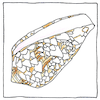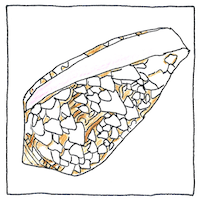John von Neumann,
Stanislaw Ulam
computer science

|
Cellular automaton
John von Neumann wanted to build self-replicating robots. This could eventually lead, he thought, to robots that could simulate a Turing machine. Von Neumann and his colleague Stanislaw Ulam built the first system of cellular automata to model the behavior of liquid motion. Von Neumann created an abstract machine that constructs new machines in orthogonal cells of a grid and then installs in them its own instructions.
Artificial life
Like single-cell life-forms, cellular automatons may respond to their neighbors, pair off, replicate, live, and die. Whether they form stable populations, whether they remain in one place or march into oblivion, they garner more than academic interest. They may model any model, in their processes or in their outputs, forming patterns of any complexity. Whether they think for themselves, whether they have free will is limited only by our imagination.
Controversial animals
Lowly amoebae are simple, living self-replicating computers. What we call plants are living, complex self-replicating animals. Like us, the earth has consciousness and makes itself a home for other creatures. We think we’re more than bags of water for replicating other creatures’ DNA.



Our notion of species is just as messed up as our ideas of race. Prejudice has long superceded knowledge and reason in the service of whoever is in power. In the Judeo-Christian Bible, God said to take dominion over every other living thing on earth.
See also in The book of science:
Readings in wikipedia: